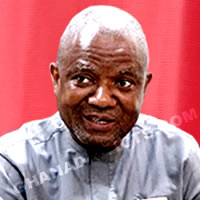

Location & Size:
The Ga South Municipal Assembly (GSMA) was in late 2007 one of the four (4) newly created districts in the Greater Accra Region. It lies within latitude 5o 48 North 5o 29 North and Latitude 0o8’ West and 0o30’ West.
The Municipality shares boundaries with the Accra Metropolitan area to the South-East, Akwapim South to the North-East, Ga West to the East, West Akim to the North, Awutu-Effutu Senya to the West, Gomoa to the South-West and the Gulf of Guinea to the South. It occupies a land area of approximately 517.2 sq km with about 362 communities. The various components of the environment are held in balance through the natural process. But man because of superior intellect is able to side step these natural processes and interfere in their operations, thus Man-Environment Interrelationship.
The location of this municipality has attracted a very large population because of its proximity to the central Accra and this has created pressure for settlement and industrial land use. The state of this relationship between man and the environment is so crucial to sustainable development. The evidence from human ecology indicates that population growth is not an independent variable but one of the variables whose influence on the integrity of the environment depends on existing socio-political conditions of the society. This would be incorporated into the Assembly’s development agenda to promote sustainable development.
Topology & Drainage
The land area consists of gentle slopes interspersed with plains in most parts and generally undulating at less than 76m above sea level. The slopes are mostly formed over the clay soils of the Dahomeyan gneiss with alluvial areas surrounding the low lying coastal lagoons.
The Akwapim range and the Weija hills rise steeply above the western edge. The crest of the Akwapim range lies generally at 300m southwards. This line of hills continues through to the Weija hills with the highest point reaching 192m near Weija.
There are two main rivers namely, the Densu and ponpon River, which drain the Municipality. The larger of the two is the Densu which drains down from the Eastern region through the western portion of the Municipality to Weija where it enters the sea. It is the source of water supply for over half of the entire population of Accra Metropolis. Other Water bodies mostly tributaries of the Adaiso, Doblo, Ntafafa and the ponpon rivers. There is a potential of aquaculture in the Municipality and if well planned it would reduce unemployment rates in the Municipality
Geology & Soil
The land area is underlined by shallow rocky soils and is extensively developed on the steep slopes of the Weija hills as well as basic gneiss inselbergs.
On the Weija hills, the soils are mainly pale and sandy with bushy quartzite occurring to the surface in most places. These soils are rich in sand stone and lime stone that are good source of material for the construction industry.
The red earth is usually developed in old and thoroughly weathered parent materials. They are typically loamy in texture near the surface becoming more clay below. The red soils are porous and well drained and support road development and also provide ample moisture storage at depth for deep rooting plants. Nutrients supplies are concentrated in the humus top soil.
Knowledge of soil types in the area is an important pre-requisite for development planning since it helps to advise on the type of crops the soil can support.
The main type of soil in this area is the Coastal Savannah Ochrosols. The coastal sands are pale yellow in colour and without humus or organic matter. These soils are suitable for coconut and shallots cultivation. On the Akwapim range, the soils are mainly pale and sandy with brushy quartzite occurring to the surface in most places. These soils are rich in sandstone and limestone that are good source of material for the construction industry.
The red earths are usually developed in old and thoroughly weathered parent materials. They are typically loamy in texture near the surface becoming more clay below. The red soils are porous and well drained and support road development and also provide ample moisture storage at depth for deep rooting plants. Nutrients supplies are concentrated in the humus top-soil.
Climate & Vegetation
The Municipality lies wholly in the coastal savanna agro-ecological zone with secondary forest in the hinterlands where rainfall is high. The rainfall pattern is bi-modal with an annual mean varying between 790mm on the coast to about 1270mm in the extreme north. The annual average temperature ranges between 25.1ºC in August and 28.4ºC in February and March are the hottest months. It has a relative humidity of about 75%. Average duration figures are about 94% and 69% at 6:00 and 15:00 respectively.
Conditions of the Natural Environment
The natural environment is gradually being tempered with because of the increasing population of the Municipality. The municipality is peri-urban and mainly a dormitory for most of the people working within and without the municipality.
In view of the above the state of the natural environment is being compromised for residential development. Most communities in the municipality are however in a transition and therefore still maintain their natural state because of less population pressures. This means that the Assembly has an opportunity to introduce Strategic Environmental Assessment in their development planning and also setting environmental policies to promote sustainable development.
Date Created : 11/28/2017 5:07:19 AM













 facebook
facebook
 twitter
twitter
 Youtube
Youtube
 +233 593 831 280
+233 593 831 280 0800 430 430
0800 430 430 GPS: GE-231-4383
GPS: GE-231-4383 info@ghanadistricts.com
info@ghanadistricts.com Box GP1044, Accra, Ghana
Box GP1044, Accra, Ghana